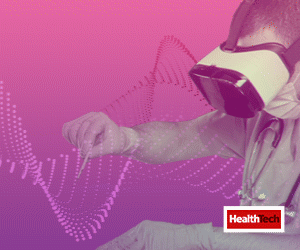Nursing instructors are leading the charge when it comes to adopting new educational technologies, outpacing efforts in medical and general education. The COVID-19 pandemic underscores the value of tools that supplement a hands-on experience.
Sixty-five percent of nursing education programs already were using VR simulation and other adaptive digital learning methods to enhance onsite learning and to ensure students are practice-ready, according to information services company Wolters Kluwer.
These applications, the firm notes in a blog post, can address a shortage of nurse educators and eliminate patient confidentiality concerns at hospital training sites.
And now, as educational programs of all types pivot to remote learning, nursing students have the advantage of leveraging digital simulation platforms designed for use outside of a traditional classroom.
These systems — which present hundreds of real-life scenarios and teach electronic health record use — offer a lifeline, often via a laptop or tablet. Virtual sessions could cover proper use of protective gear, for instance, or how to calm an aggressive patient.
“It’s so important that we keep students engaged in patient care activities while learning from a distance,” Hollie Moots, a nurse education specialist for Elsevier, noted in a recent webinar. “In order to build solid clinical judgement, our students need opportunities to apply content in the care of a patient.”
The approach, though necessary, isn’t new: The National Council of State Boards of Nursing has long affirmed that targeted simulations could support up to half of clinical educational experiences — a viewpoint affirmed by the National League for Nursing.
VR Simulations for Nurses Promote Learning from Anywhere
One tool poised for growth in this space is virtual reality, which Patricia Sengstack, an associate professor of nursing at the Vanderbilt University School of Nursing, calls a “game changer.”
“We often have to train nurses on a new skill on the front lines; we could use VR to put a group of them through a simulation,” she told HealthTech last year.
Not only is the tech effective, it’s also enjoyable: A VR game developed at Robert Morris University that allows nursing students to practice urinary catheter insertion produced the same pass rate as students who practiced on manikins, research published in Clinical Simulation in Nursing has found.
Students who trained with VR spent more time practicing, could complete more procedures in a 60-minute period and gave higher marks to the immersive experience.
The uses are many. At the University of Nevada, Reno, nursing students have used HTC Vive headsets to take notes while watching actors portraying a doctor and nurse tend to a patient with pregnancy complications — with the team asking the student for feedback.
Although some tools may require a higher investment, other mobile headsets can be used with or without smartphones. Finding VR solutions for e-learning outside of a classroom can bridge the gap to support current safety measures without sacrificing lesson plans.
A new training lab at the University of New England equipped with Oculus Rift headsets is temporarily closed due to COVID-19, but nursing students may continue the virtual activities at home with a mobile device.
“It’s still a key way to teach skills,” Dawne-Marie Dunbar, who directs the college’s Interprofessional Simulation and Innovation Center, told CNN last month.
Benefits of VR Simulated Training Programs for Nurses
Whether or not they’re deployed during a time of crisis, immersion technologies can influence point-of-care decision-making when a nurse enters the workforce. The National League for Nursing credits immersive tech with:
- Engaging diverse learners to bridge clinical and classroom experiences
- Standardizing lesson plans to reduce unpredictable or unequal opportunities
- Providing high-quality scenarios in lieu of a growing lack of clinical placements
These are key reasons why the efforts should continue. “Nurse educators must be nimble enough to embrace new technology and explore fresh approaches to teaching,” a 2019 vision statement from the American Association of Colleges of Nursing notes.
Not only does the association support simulated learning to provide “adequate exposure to essential high-risk, low-volume clinical experiences,” it affirms that opening satellite centers stocked with the immersive tools — accessible by students and clinicians — could save programs money and ensure caretakers can leverage these lifelike lessons.
This article is part of HealthTech’s MonITor blog series. Please join the discussion on Twitter by using #WellnessIT.














